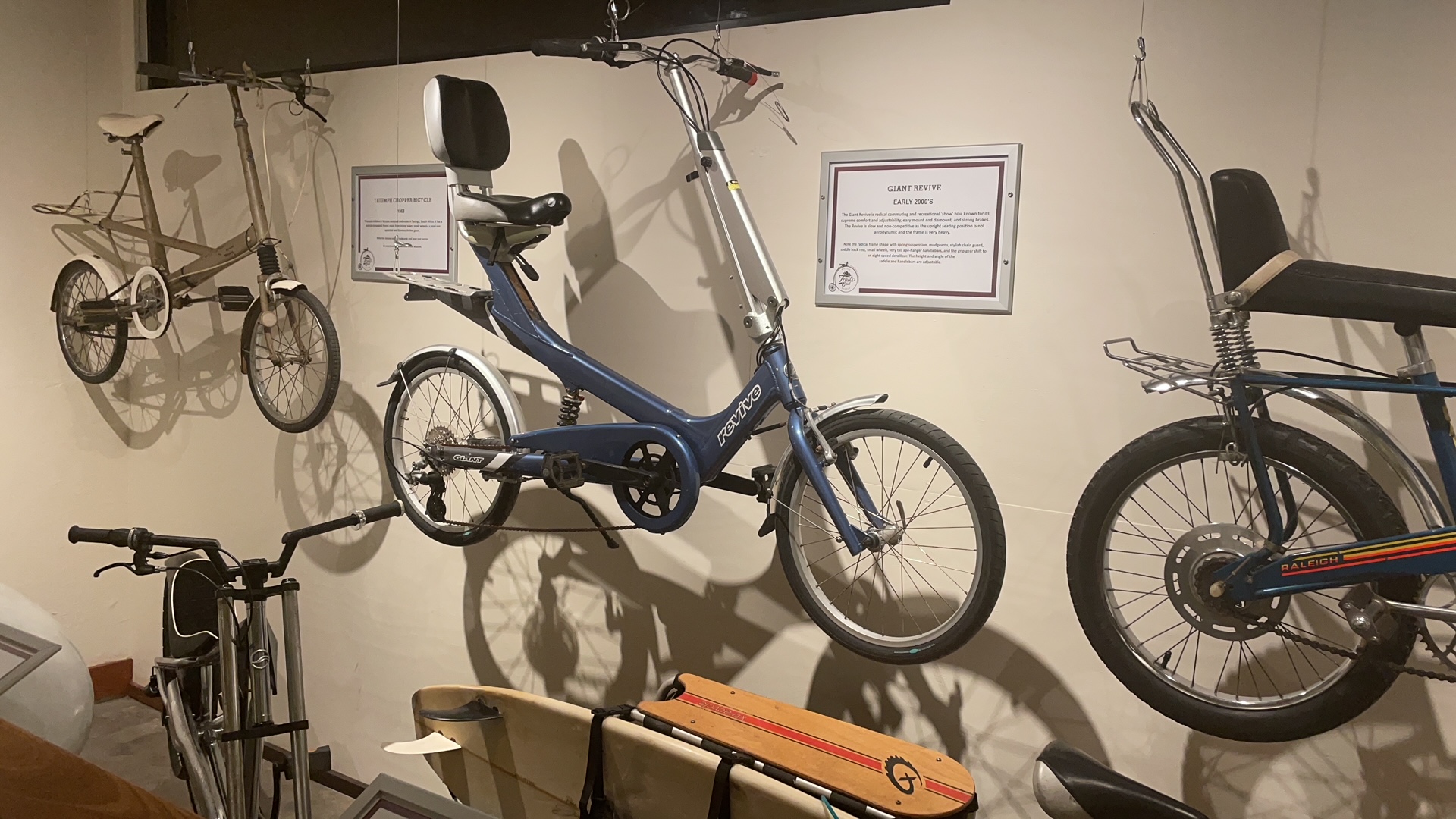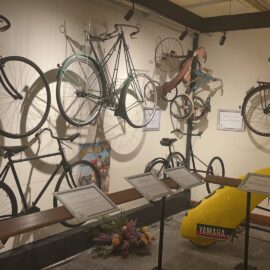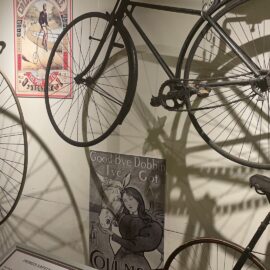
01 Nov On Yer Bike: The Bicycle
This month, FMM Curator Wayne Harley reports on an exciting new pedal power initiative involving the museum …
This month I want to report on something a little different but still extremely fascinating – and rather remarkable. It is about the opening of a museum display dedicated to an invention that changed the world of personal transport long before the motorcycle or motor car were even thought of… The concept of human powered vehicles has been around since the time of Leonardo da Vinci and remained relatively unchanged in principal since the design of the Dandy Horse, Bone Shaker and Velocipede of the 1800s. Yes, I’m referring to the humble bicycle…
Along with a century of innovation and the industrial revolution, the world saw the Velocipede transform into the well remembered High Ordinary bicycle, more commonly known as the Penny Farthing, created by James Starley. This was later developed by Harry John Lawson into the first safety bicycle, the forerunner of the recognisable shape of what we call a bicycle today.
In many nations around the globe, the bicycle is still the most common form of personal transport with an estimated 120 million bikes being produced each year and over 1 billion claimed to be in daily use each day. FMM has been in possession of a rather fine and extensive bicycle collection since it purchased the Heidelberg Museum Collection back in 2004. The core of this collection originated with Patrick Chapman and PJ Carroll, and was purchased out of the UK back in 1974 by the then Rembrandt Group. Over the years, a number of individual donations were received, all adding to what is the museum’s bicycle collection today. Since FMM opened in 2007, we have always had a few examples of bicycles on view, the highlight being the interesting High Ordinary collection on display in Hall C.
However, FMM is primarily a motor museum, and earlier this year I was approached by Shawn Foster and Pieter Silberberg with a request to assist with a loan of a few of our bicycles. They were planning to open a new bicycle museum at the Trail’s End Bike Hotel in Grabouw, situated in the beautiful Elgin Valley. Negotiations started and before too long a loan agreement was drawn up between us and approved by Johann Rupert. A number of bicycles from our collection were identified by the Trail’s End Museum curator Professor Mike Burton, who was already known to FMM when he borrowed a few of our bicycles for his pedal power display at the MTN Science Centre. Professor Burton has put together a very interesting and easy to follow display of the evolution of the bicycle, starting with a replica of a 16th century Da Vinci wooden bicycle, all the way up to 20th-century racing and recumbent one-off specials built out of modern composite materials. It was into this story line that FMM’s bicycles were readily accommodated.
After many months of planning, hard work and construction, the Trails End Museum was officially opened by Pieter Silberbauer on October 1 with all the pomp and ceremony that befits an occasion of this nature. Professor Burton gave a very informative opening talk on the history of the bicycle before attendees headed off to view the new museum.
Part of the loan agreement between the Trails End Museum and FMM is that Trails End, with its workshop and qualified skilled technicians, has agreed to undertake a number of bicycle restorations for FMM’s artifacts while they are in their care. This is an exciting prospect for us as, for many years; we have been interested in restoring some of our collection, but have never really been sure whom to approach. Now with this agreement in place, we are finally able to achieve our aim.
If you are keen on cycling, engineering and/or enjoy the healthy outdoors, a visit to the Trails End Bicycle Museum is definitely well worth a visit. Trails End can be contacted or followed on the following addresses and links www.trailsend.bike or @TrailsEndZA.
(Wayne’s Harley-Davidson riding experience on the Reef has been held over until next month.)





